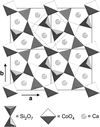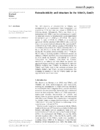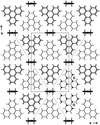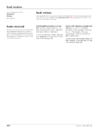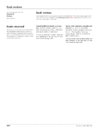issue contents
August 2001 issue

Cover illustration: The structure of Pu31Pt20 [D. T. Cromer & A. C. Larson (1977). Acta Cryst. B33, 2620-2627] viewed nearly perpendicular to a Pu, Pt disc (10 Å thick and 50 Å in diameter) down [111]. Details of the structure were taken from the intermetallics crystal structure database CRYSTMET® using the Materials ToolKit graphics software from Toth Information Systems, Inc.
obituaries

research papers




A new structural characterization based on the superspace approach is presented for the Srn(Nb,Ti)nO3n + 2 compound series. A single superspace group and a common structural model with step-like occupation modulations describe the whole compound series.


















short communications
books received




 journal menu
journal menu









